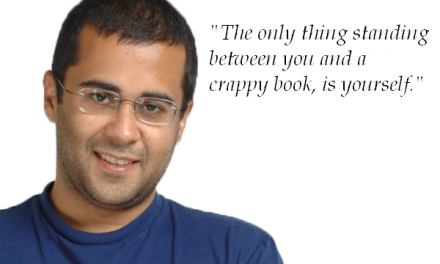I had dinner with Dinesh last week. Dinesh is a CEO of a $40 M software product company. He looked upset and lost and his cup of woes was full when I probed deeper.
Dinesh had just fired his newly hired CTO, Sumit, in less than 6 months and was feeling upset.
Sumit was 36, a graduate from an IIT, and masters from a leading US university and seemed just the right dose for the company which was struggling for direction.
The company Dinesh headed was not doing too well in the last 2 years with declining license revenues and unpredictable service revenues. Its senior management was a loyal team of executives in their 40s and 50s who seemed jaded and tactical and seemed clueless in the world of Web 2.0, Social Networking, Virtualization, and on demand technologies. Dinesh wanted someone who could identify with the changing times and trends and help steer the company’s direction in the maze of new technologies.
I remembered our dinner 6 months back when Dinesh was all excited about Sumit, who he said was “full of energy and passion, has great ideas and vision, and is just the right candidate to navigate the technological path for the company”
6 months down the road, it all seemed a big mistake. Sumit’s ideas,which seemed grand and exciting then, were now “dreamland visions which are unrealistic”. The energy which was visible in articulating grand plans and painting new visions ,disappeared when it came to executing the ideas in the context of budget, deadlines, and realistic workable plans.
It added to Dinesh’s misery when he discovered something which he wished he knew before hiring Sumit. Apparently Sumit had faced several challenges in his previous company, where he worked as a Development Manager heading a development team in a Fortune 500 Technology giant. The challenges were especially in execution and developing a strategy in collaboration with key stakeholders.
Sumit had apparently made the move to a smaller company because he felt things would be easier in a smaller company. He had to learn the hard way that success and failure have more to do with your fitment to your role and your commitment to the role than to the size of the organization.
Incidentally I knew Sumit very well and I checked with him what happened. His version differed with Dinesh on several counts, but both agreed that they underestimated the challenges which lay ahead in terms of the role he was taking upon.
IT always has a bias for fresh, energetic talent which is in sync with the present and future and does not carry a baggage of past. In its desire for change, and with its bias for age, companies often take bets on people who are not actually ready for the role which they are thrust into or which they eagerly take on.
The fast-track individuals, the horses who are bet upon, are often too enamored by fancy titles (General Manager/Vice President/CXO) and the responsibility which come with it. Most desire it, but not all deserve it.
In principle, the phenomenon of people taking on roles bigger than their apparent competence when they are not completely ready is not an unwelcome approach.
Companies, especially in a rapid growth industry like IT, do not always have the luxury of waiting till a person is 100% ready or waiting till one has a few choices when staffing a critical role.
The successes and failures have a much higher impact at senior levels, especially the CXO levels.
A below par performance or even absolute failure is anytime bad and hurts terribly but when you are in junior or middle management it is much more palatable and you have company. You have a cushion of senior management, sometimes companies support you and give you a second chance and there is always a hope of “next time I will not make the mistake”. There is often a coach somewhere in the shadows, if only you look, to help you shake off the failure and get on with life.
In senior roles, life is much more unforgiving and consequences lot less palatable. The choices are few and given the corporate reality today, it gets lonely at the top.
In IT, the traditional command control structure does not work and individuals often need to have a mix of technical, strategic, and business skills along with an ability to collaborate with key stakeholders at all levels.
When someone fails to deliver results, the reasons could be many,
Sometimes the expectations are unrealistic, or the individual competence falls short of what was required, or the organizational support is inadequate, or the business environment changes suddenly.
No matter what be the reasons, at senior levels, someone needs to take the rap and the setbacks to the career are not insignificant.
There is no perfect way to judge the readiness of a person for a higher responsibility.
In the end, the onus of the judgment is as much on the individual as on the company.
A right blend of optimism and realism, and an ability to see the reality, not what you want to see, can help one judge if it is wiser to wait then hurry to the top.
When I last checked with Sumit, he had taken up a job in another mid size company, as a manager heading a large team and was consciously working on the challenges he had faced when working for Dinesh. He had put the experience behind him, had learnt from it and was moving on!










